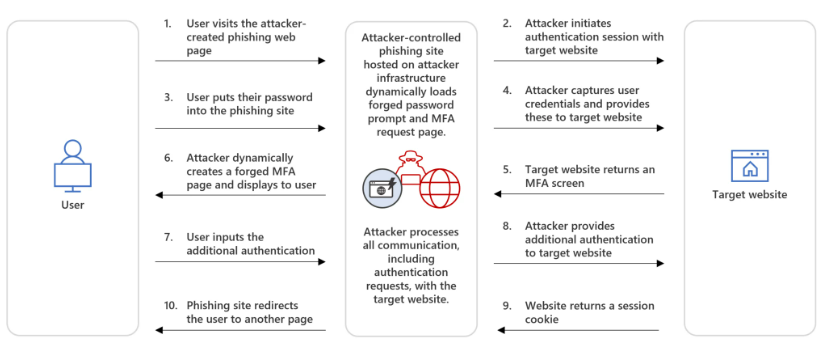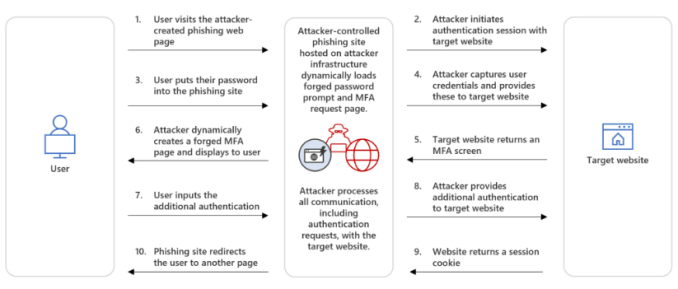
Microsoft
researchers
warn
of
banking
adversary-in-the-middle
(AitM)
phishing
and
BEC
attacks
targeting
banking
and
financial
organizations.
Microsoft
discovered
multi-stage
adversary-in-the-middle
(AiTM)
phishing
and
business
email
compromise
(BEC)
attacks
against
banking
and
financial
services
organizations.
In
AiTM
phishing,
threat
actors
set
up
a
proxy
server
between
a
target
user
and
the
website
the
user
wishes
to
visit,
which
is
the
phishing
site
under
the
control
of
the
attackers.
The
proxy
server
allows
attackers
to
access
the
traffic
and
capture
the
target’s
password
and
the
session
cookie.
Microsoft
discovered
that
the
attackers
initially
compromised
a
trusted
vendor,
then
targeted
multiple
organizations
with
AiTM
attacks
and
follow-on
BEC
activities.
“This
attack
shows
the
complexity
of
AiTM
and
BEC
threats,
which
abuse
trusted
relationships
between
vendors,
suppliers,
and
other
partner
organizations
with
the
intent
of
financial
fraud.”
reads
the
analysis
published
by
Microsoft.
“While
the
attack
achieved
the
end
goal
of
a
typical
AiTM
phishing
attack
followed
by
business
email
compromise,
notable
aspects,
such
as
the
use
of
indirect
proxy
rather
than
the
typical
reverse
proxy
techniques,
exemplify
the
continuous
evolution
of
these
threats.”
This
campaign
outstands
for
the
use
of
an
indirect
proxy
that
provided
attackers
control
and
flexibility
in
tailoring
the
phishing
pages
to
their
targets
and
steal
session
cookies.
Upon
signing
in
with
the
stolen
cookie
through
a
session
replay
attack,
the
attackers
leveraged
multifactor
authentication
(MFA)
policies
that
have
not
properly
to
update
MFA
methods
without
an
MFA
challenge.
Then
the
attacker
sent
out
more
than
16,000
emails
to
the
target’s
contacts
as
part
of
a
second-stage
phishing
campaign.
Microsoft
states
that
affected
organizations
need
to
revoke
session
cookies
and
roll
back
modifications
made
by
the
threat
actor
in
the
MFA
process.
Microsoft
attributes
the
attack
to
an
emerging
cluster
tracked
as
Storm-1167.
The
attack
chain
starts
with
a
phishing
email
that
includes
a
link
pointing
to
a
fake
Microsoft
sign-in
page.
The
page
is
designed
to
trick
visitors
into
entering
their
credentials
and
2FA
code.
Then
attackers
use
the
stolen
credentials
and
session
cookies
to
access
the
victim’s
mail
inbox
through
a
replay
attack.
The
stolen
data
are
also
used
to
carry
out
a
BEC
attack.
Microsoft
pointed
out
that
AiTM
phishing
attack
leads
to
second-stage
BEC
which
was
also
detailed
in
the
report
published
by
the
researchers.
Follow
me
on
Twitter: @securityaffairs and Facebook and Mastodon
(SecurityAffairs – hacking,
cyberattack)








